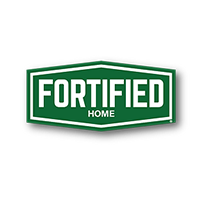FAQ
-
The frequency of commercial roof inspections can vary depending on factors such as the type of roofing system, climate, and the age of the roof. However, a general guideline is to schedule inspections at least twice a year, typically in the spring and fall. Additionally, it's advisable to conduct inspections after severe weather events, such as storms or heavy snowfall, to assess any potential damage.
-
The timeline for a commercial roof replacement can vary widely depending on factors such as the size and complexity of the project, weather conditions, and the chosen roofing materials. On average, a complete commercial roof replacement can take anywhere from a few days to a few weeks. It's essential to work with a reputable roofing contractor who can provide a detailed project timeline and keep you informed throughout the process.
-
The frequency of commercial roof maintenance depends on factors such as the type of roofing system, climate, and age of the roof. Generally, businesses should schedule roof maintenance at least twice a year, typically in the spring and fall. Additionally, after severe weather events, it's advisable to conduct inspections to assess any potential damage.
-
The frequency of commercial roof inspections depends on various factors, including the type of roofing system, climate, and age of the roof. In general, it's advisable to schedule inspections at least twice a year, typically in the spring and fall. Additionally, after severe weather events or if any issues are suspected, it's essential to conduct inspections promptly.
-
Choosing a roofing material involves assessing its durability, compatibility with your local climate, aesthetic appeal, and budget constraints. Asphalt shingles are cost-effective, while metal offers longevity. Tile and slate exude elegance but might be heavier and pricier. Select a material aligned with your preferences and tailored to withstand your specific climate conditions for optimal performance and aesthetics.
-
Keep an eye out for missing or broken shingles, water stains on your ceiling, areas that seem to sag, or any visible cracks. If you notice any of these signs, it could mean there's a problem with your roof that needs fixing right away. Getting help promptly can prevent more damage and make sure your roof stays strong.
-
To keep your home's roof in top shape, regularly clear away debris, trim branches hanging over it, and fix small issues quickly. Proper attic ventilation and insulation are also vital for a healthier and more durable roof. These measures collectively contribute to the optimal performance and longevity of your residential roof.
BUILDING TRUST, NOT JUST ROOFS
Our team is fully licensed and insured for your protection.










